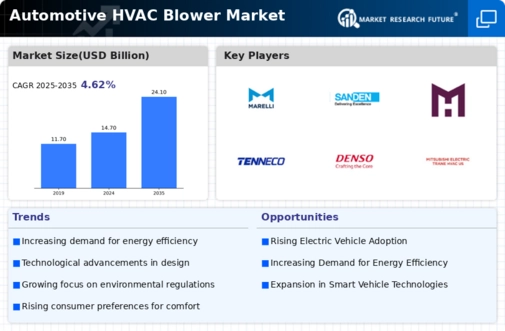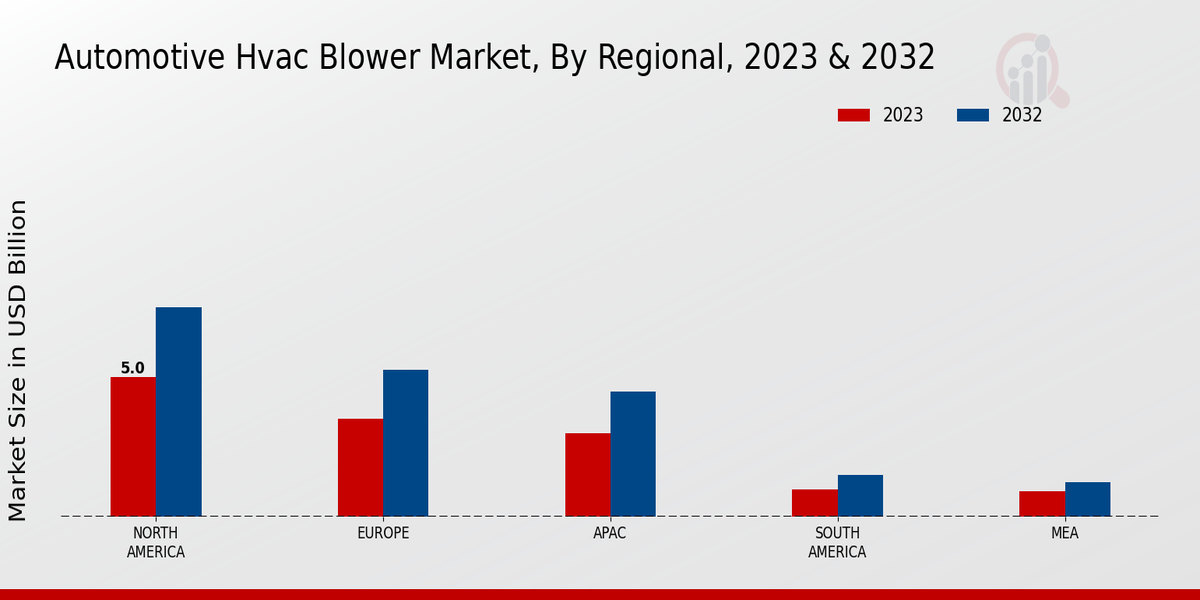Market Growth Projections
The Global Automotive HVAC Blower Market Industry is anticipated to experience robust growth over the next decade. With projections indicating a market size of 14.7 USD Billion in 2024 and an increase to 24.1 USD Billion by 2035, the industry is set to expand significantly. This growth trajectory suggests a compound annual growth rate (CAGR) of 4.62% from 2025 to 2035. Such figures highlight the increasing importance of HVAC systems in modern vehicles, driven by technological advancements, regulatory pressures, and changing consumer preferences.
Increasing Vehicle Production
The Global Automotive HVAC Blower Market Industry experiences a notable boost due to the rising production of vehicles worldwide. As manufacturers ramp up their output to meet consumer demand, the integration of advanced HVAC systems becomes essential for ensuring passenger comfort. In 2024, the market is projected to reach 14.7 USD Billion, reflecting the industry's response to the growing number of vehicles on the road. This trend is expected to continue, with the market anticipated to expand significantly as production levels rise, thereby driving the demand for efficient and reliable HVAC blowers.
Growth in Electric Vehicle Adoption
The Global Automotive HVAC Blower Market Industry is poised for growth due to the increasing adoption of electric vehicles (EVs). As the automotive landscape shifts towards electrification, the demand for efficient HVAC systems tailored for EVs becomes crucial. These systems often require specialized blowers that can operate effectively within the unique constraints of electric powertrains. The market is expected to benefit from this transition, with a projected CAGR of 4.62% for the period from 2025 to 2035, as manufacturers invest in developing HVAC solutions that cater to the evolving needs of the electric vehicle segment.
Technological Advancements in HVAC Systems
Technological innovations play a pivotal role in shaping the Global Automotive HVAC Blower Market Industry. The introduction of smart HVAC systems, which utilize sensors and advanced controls, enhances energy efficiency and user experience. These advancements not only improve the performance of HVAC blowers but also contribute to reduced emissions, aligning with global sustainability goals. As the automotive sector increasingly adopts these technologies, the market is likely to witness substantial growth, with projections indicating a rise to 24.1 USD Billion by 2035, driven by consumer preference for modern, efficient vehicles.
Rising Consumer Awareness of Comfort Features
Consumer preferences are evolving, with an increasing emphasis on comfort and convenience in vehicles. The Global Automotive HVAC Blower Market Industry is responding to this shift by offering advanced HVAC systems that provide enhanced climate control. As consumers become more aware of the benefits of sophisticated HVAC solutions, manufacturers are compelled to incorporate these features into their vehicles. This trend is likely to drive market growth, as the demand for high-quality HVAC blowers that ensure optimal passenger comfort continues to rise, reflecting changing consumer expectations.
Regulatory Compliance and Environmental Standards
The Global Automotive HVAC Blower Market Industry is significantly influenced by stringent regulatory frameworks aimed at reducing vehicle emissions and enhancing energy efficiency. Governments worldwide are implementing regulations that necessitate the adoption of advanced HVAC systems in vehicles. Compliance with these standards often requires the integration of high-performance HVAC blowers, which can operate efficiently under various conditions. As manufacturers strive to meet these regulations, the demand for innovative HVAC solutions is expected to rise, further propelling market growth in the coming years.















